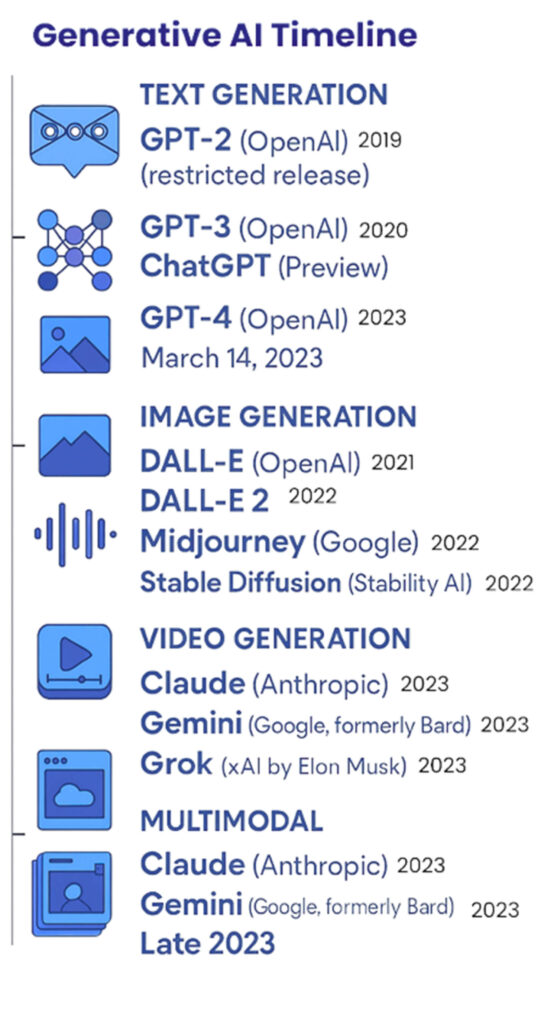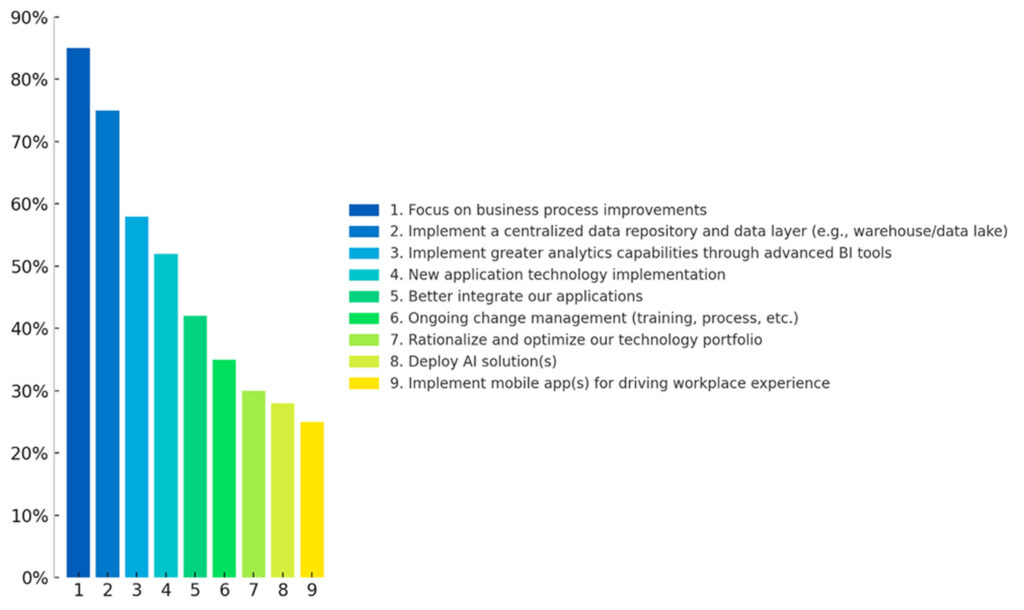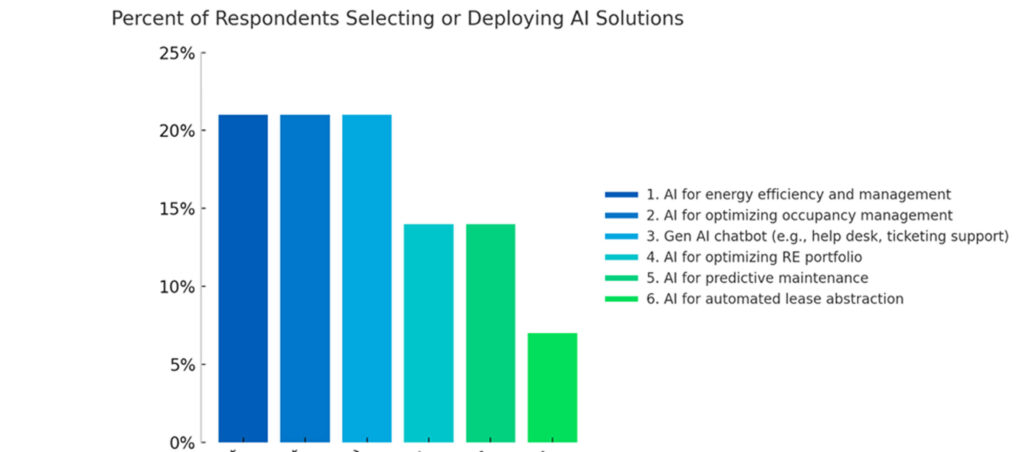
Over the last 5 years, we have witnessed rapid advancement in the field of Artificial Intelligence (AI) through the launch of publicly available Generative AI (Gen AI) tools.
In contrast to traditional AI, generative AI is a technology that is focused on the creation of new content, such as text, images, music, video, or code, based on patterns learned from existing data. Unlike traditional AI systems that are primarily used for analysis, prediction, or classification, generative AI can produce original outputs that resemble human-created content.
With the advancement and excitement generated by these consumer-facing Gen AI tools, it now begs the question “How can Gen AI be applied to the enterprise?”. Indeed, the purpose of this article is to answer this question within the context of corporate real estate (CRE) and Facilities Management (FM). In doing so, we will be leveraging the responses given by our clients through our 2024 Technology Survey.

Let’s recap the priority areas for our respondents from the 2024 Trascent Technology Survey:

As can be seen from the above, the survey reveals a strong focus on business process improvements and data analytics as top priorities for CRE organizations. These areas are seen as critical for driving efficiency and productivity through process standardization and streamlining across the organization. The emphasis on data analytics highlights the importance of investing in data foundations to support informed decision-making and optimizing operations.
The other highlight from our survey is that emergence of AI is a key priority. We expect Generative AI (Gen AI) to gradually shape how CRE/FM organizations will operate in the near future.
Before diving into AI-specific trends, it’s crucial to understand the broader technology landscape in CRE. According to Trascent’s technology survey:
This context underscores a key point: AI in CRE/FM is still emerging, and its adoption is still in the early stages and will mature over the coming years.
The survey indicates that while interest in AI remains high, CRE organizations are still navigating the learning curve in this space. Several AI use-cases have elicited interest, including occupancy management, real estate portfolio optimization, predictive maintenance, generative AI-based chatbots, and energy management. These use-cases demonstrate the potential of AI to transform various aspects of CRE operations and enhance overall efficiency.

Trascent’s survey revealed that there isn’t a single dominant (“killer”) AI use-case yet in CRE. Instead, organizations are experimenting across multiple promising areas. Some of the top Gen AI-related use cases identified include:
Despite the clear range of use cases, widespread adoption of AI solutions in CRE/FM remains a work in progress. The 2024 Trascent Technology Survey indicated that Energy Management, Occupancy Management, and Help Desk Chatbots are the areas seeing the most active AI deployments today.
However, barriers remain:
Trascent’s 2024 Technology Survey provides a valuable snapshot of the current technology trends and priorities in the CRE sector. The focus on business process improvements, data analytics, and AI solutions highlights the industry’s commitment to leveraging technology to enhance operations and drive growth.
AI and Gen AI in particular, will likely become increasingly integral to CRE operations over the next few years. As CRE firms build stronger data foundations and grow more comfortable with AI applications, adoption rates are expected to climb. Critical to success will be a strategic, measured approach: identifying the type of problems AI can solve, piloting solutions, and scaling them thoughtfully across the organization.
As Trascent’s survey illustrates, while AI in CRE is not yet ubiquitous, it holds tremendous potential. Organizations that invest early, learn from pilots, and integrate AI thoughtfully into their processes will gain a competitive edge in an increasingly data-driven real estate market. As AI continues to develop, CRE organizations must stay abreast of the latest advancements and invest in technology that aligns with their strategic goals.